what is greenhouse?
A greenhouse is a structure—usually made of glass or transparent plastic—that allows sunlight to enter and traps heat inside, creating a controlled environment for plants to grow.
farmers, researchers, and gardeners use greenhouses to:
Grow crops year-round.
Protect plants from harsh weather (frost, heavy rain, wind).Control temperature, humidity, and light for optimal growth.
Types of greenhouse
Types of greenhouse according to the covered material
1.Glass Greenhouse
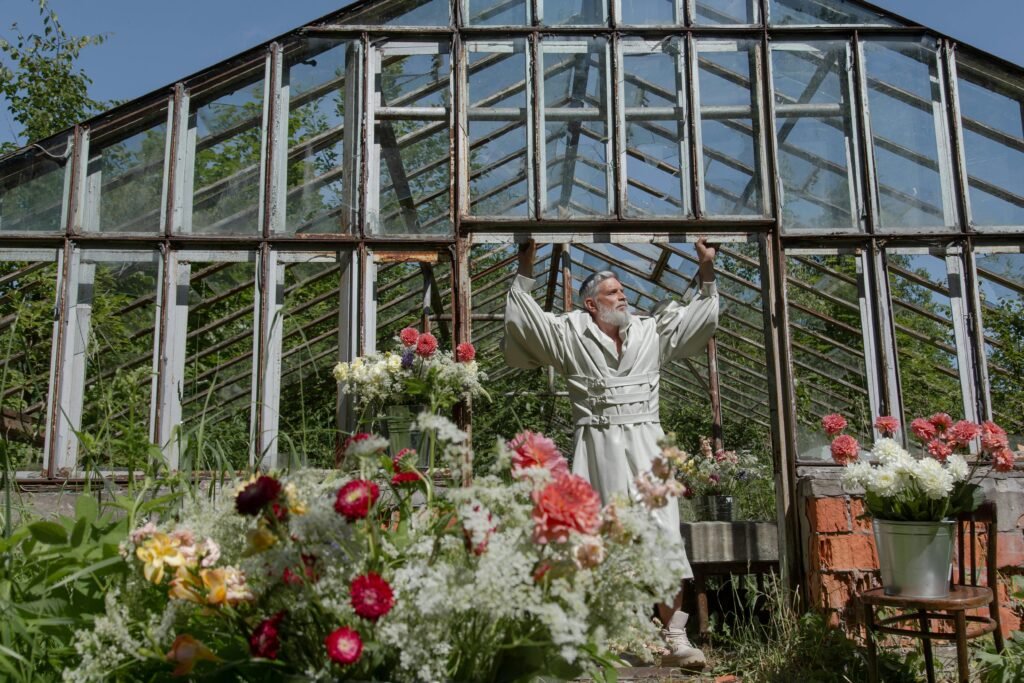
Glass greenhouses provide excellent light transmission, often above 90%, which makes them ideal for crops that require a lot of natural sunlight. They are also very durable and, if maintained properly, can last for decades. However, glass is heavy and fragile, so it requires a strong and expensive frame for support. The high initial cost and the risk of breakage make glass greenhouses less practical for small-scale or low-budget farming.
2.Plastic Film (Polyethylene) Greenhouse
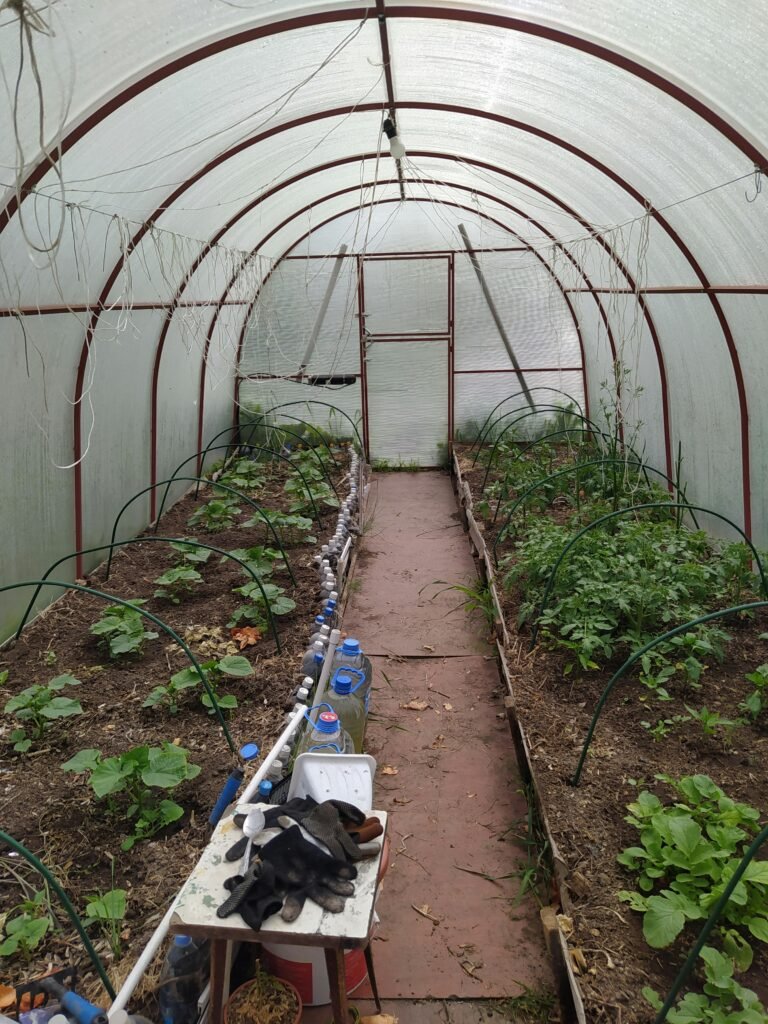
Polyethylene-covered greenhouses are the most economical option. They are lightweight, easy to construct, and suitable for seasonal or temporary use. This makes them very popular among vegetable and flower growers. On the downside, polyethylene films degrade quickly under sunlight, even with UV stabilizers, and usually need replacement every 2–5 years. They are also more prone to tearing from wind or mechanical damage.
3.Polycarbonate Greenhouse
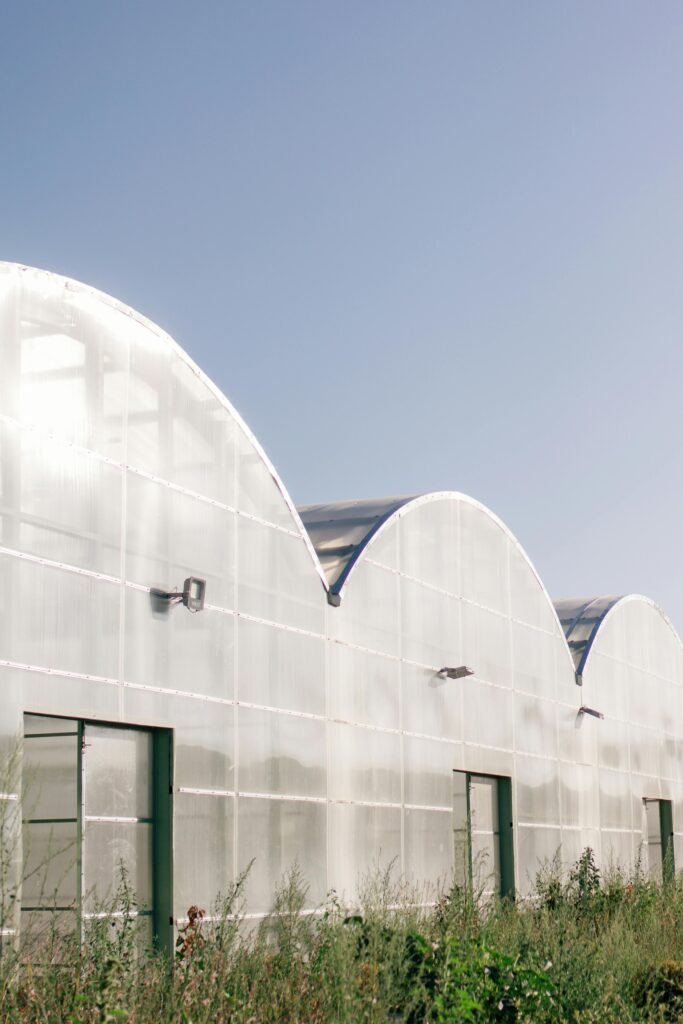
Polycarbonate sheets offer a good balance between durability and cost. They are strong, lightweight compared to glass, and provide good insulation, especially in double- or triple-wall panels, which helps conserve heat. They also resist breakage better than glass. However, they transmit slightly less light than glass and can be more expensive than polyethylene films. Over time, cheaper polycarbonate sheets may also yellow or lose clarity.
types of greenhouses based on construction material
1.Wooden Framed Structures
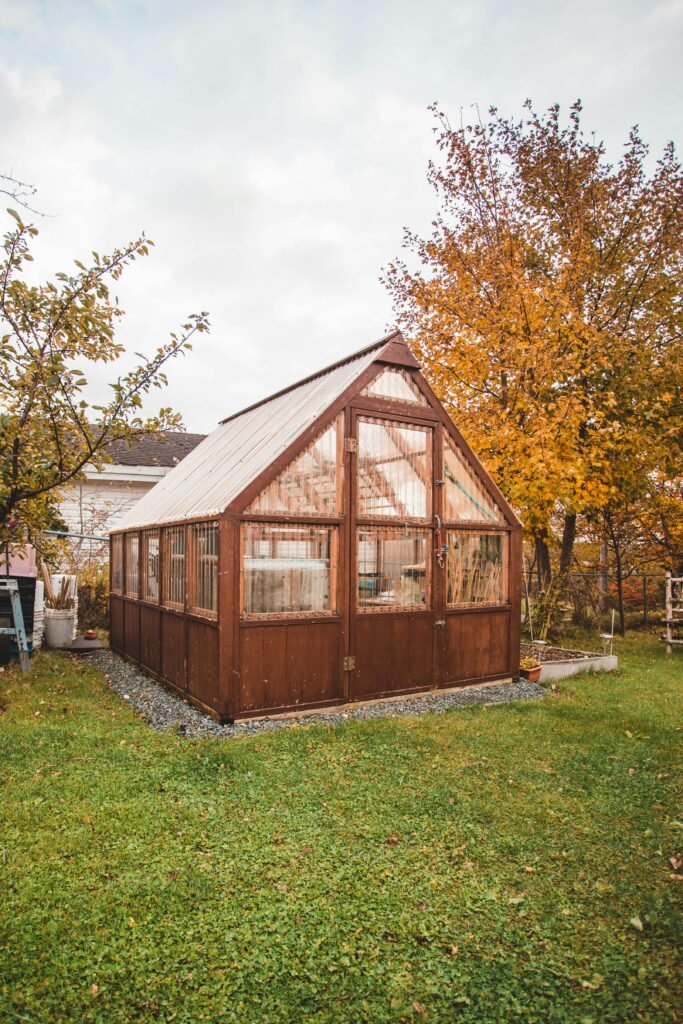
Wooden framed greenhouses are among the oldest types and are usually used for small-scale or low-cost farming. Wood is locally available, easy to work with, and relatively inexpensive, making it a practical choice for farmers with limited resources. These structures provide good strength for small greenhouses and are easy to repair. However, wood has disadvantages such as susceptibility to decay, termites, and weathering, which reduce its lifespan. It is also not suitable for large commercial greenhouses because it cannot support very wide spans without additional reinforcement.
2.Pipe Framed Structures
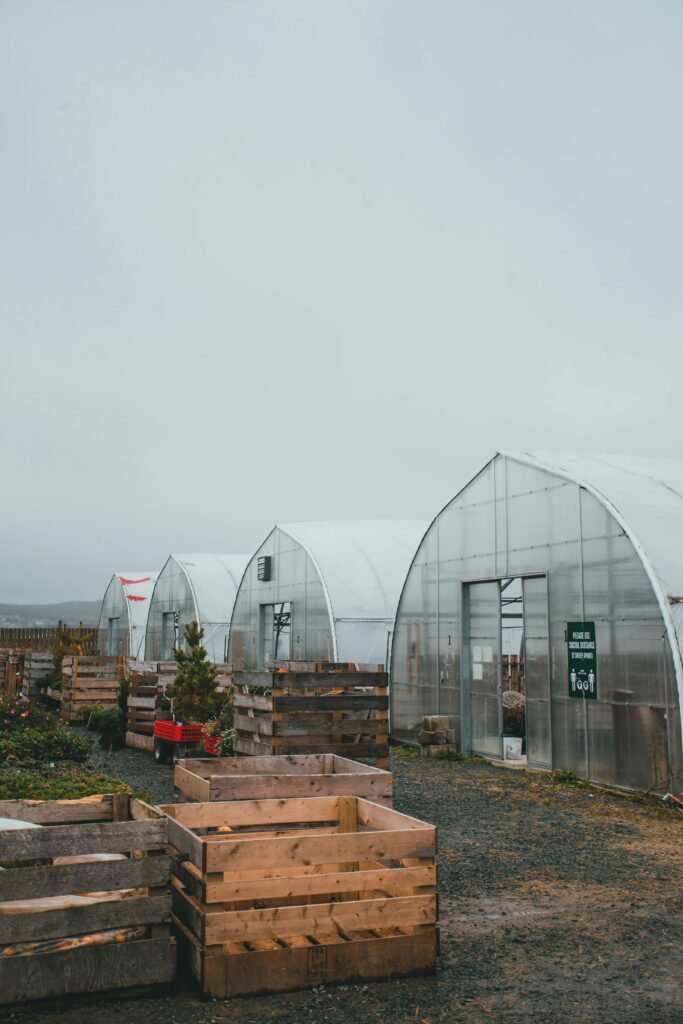
Pipe framed greenhouses are commonly made from galvanized iron (GI) or steel pipes. They are lightweight yet strong, corrosion resistant (if galvanized), and can support wider spans than wooden frames. The simplicity of the design allows for easy construction and dismantling, making them popular for temporary or semi-permanent greenhouses. The main disadvantage is that they may be less durable than heavy-duty truss structures, and in the case of low-quality pipes, rusting can occur if not properly treated.
3.Truss Framed Structures
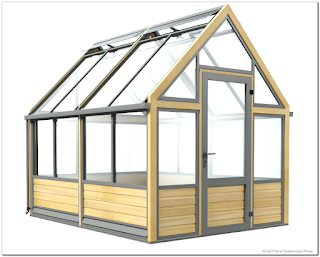
Truss framed greenhouses are made with steel sections or angles arranged in trusses, which provide high strength and stability. This type is best suited for large-scale, permanent, commercial greenhouses where wide spans are required without internal supports, allowing maximum use of space. Truss structures are durable, long-lasting, and can withstand heavy loads of wind and snow. On the downside, they are expensive to construct, require skilled labor for fabrication and installation, and may not be economical for small farmers.
Pros of greenhouse
year-round production → Crops can be grown in all seasons regardless of outside climate.
Protection → Shields plants from wind, rain, frost, snow, and pests.
Controlled environment → Temperature, humidity, and light can be regulated for optimal growth.
Higher yield & quality → Better growing conditions lead to more production per area.
Efficient use of resources → Water and fertilizers can be applied more precisely.
Diverse crops → Enables cultivation of exotic or off-season crops.
cons of greenhouse
High initial cost → Construction and equipment require large investment.
Maintenance cost → Covers, cooling, heating, and irrigation systems need regular upkeep.
Skilled management needed → Requires knowledge of climate control and crop management.
Risk of rapid spread of diseases/pests → Closed environment can accelerate infestation.
Energy requirement → Heating, cooling, and lighting systems may increase operational costs.
Not always eco-friendly → Use of plastics and high energy consumption may impact the environment
greenhouse placement
considering points
The placement of a greenhouse is crucial for its efficiency and productivity. It should be located in an area with maximum sunlight, especially during winter, and away from tall buildings, trees, or hills that may cast shade. In colder regions, an east–west orientation is preferred to capture more sunlight, while in warmer regions, a north–south orientation helps reduce overheating. Wind conditions must also be considered, as strong winds can damage the structure and increase heat loss; therefore, the site should be naturally sheltered or provided with windbreaks. The land should be slightly elevated to ensure proper drainage and prevent waterlogging, with soil that is well-drained, fertile, and suitable for crop growth. A continuous supply of clean water is essential for irrigation, cooling, and cleaning, so proximity to a reliable water source is important. Accessibility is another key factor, as good road connectivity helps in the transportation of inputs and outputs, while closeness to markets reduces costs and delays. Availability of electricity for pumps, fans, heating, and lighting is necessary, along with nearby labor resources. Finally, the site should have enough open space around it to allow for future expansion if needed.


